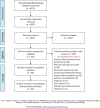Spontaneous Closure of the Ductus Arteriosus in Preterm Infants: A Systematic Review
- PMID: 33014935
- PMCID: PMC7516116
- DOI: 10.3389/fped.2020.00541
Spontaneous Closure of the Ductus Arteriosus in Preterm Infants: A Systematic Review
Abstract
The optimal management strategy for patent ductus arteriosus in preterm infants remains a topic of debate. Available evidence for a treatment strategy might be biased by the delayed spontaneous closure of the ductus arteriosus in preterm infants, which appears to depend on patient characteristics. We performed a systematic review of all literature on PDA studies to collect patient characteristics and reported numbers of patients with a ductus arteriosus and spontaneous closure. Spontaneous closure rates showed a high variability but were lowest in studies that only included preterm infants with gestational ages below 28 weeks or birth weights below 1,000 g (34% on day 4; 41% on day 7) compared to studies that also included infants with higher gestational ages or higher birth weights (up to 55% on day 3 and 78% on day 7). The probability of spontaneous closure of the ductus arteriosus keeps increasing until at least 1 week after birth which favors delayed treatment of only those infants that do not show spontaneous closure. Better prediction of the spontaneous closure of the ductus arteriosus in the individual newborn is a key factor to find the optimal management strategy for PDA in preterm infants.
Keywords: ELBW; VLBW; patent ductus arteriosus; preterm infants; spontaneous closure; systematic review.
Copyright © 2020 de Klerk, Engbers, van Beek, Flint, Reiss, Völler and Simons.
Figures




References
-
- Hundscheid T, Onland W, Overmeire B, Van Dijk P, Kaam AHLC, Van Dijkman KP, et al. . Early treatment versus expectative management of patent ductus arteriosus in preterm infants: a multicentre, randomised, non-inferiority trial in Europe (BeNeDuctus trial). BMC Pediatr. (2018) 18:262. 10.1186/s12887-018-1215-7 - DOI - PMC - PubMed
Publication types
LinkOut - more resources
Full Text Sources

